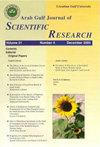S-allyl cysteine and Taurine attenuate diabetic nephropathy in rats via the inhibition of oxidative stress and recovering histopathological changes
Q4 Business, Management and Accounting
引用次数: 0
Abstract
PurposeRenal failure is an end-stage consequence after persistent hyperglycemia during diabetic nephropathy (DN), and the etiology of DN has been linked to oxidative stress. The purpose of this research was to determine the beneficial synergistic effects of S-Allyl Cysteine (SAC) and Taurine (TAU) on oxidative damage in the kidneys of type 2 diabetic rats induced by hyperglycemia.Design/methodology/approachExperimental diabetes was developed by administering intraperitoneal single dose of streptozotocin (STZ; 65 mg/kg) with nicotinamide (NA; 230 mg/kg) in adult rats. Diabetic and control rats were treated with SAC (150 mg/kg), TAU (200 mg/kg) or SAC and TAU combination (75 + 100 mg/kg) for four weeks. The estimation of body weight, fasting blood glucose (FBG), oral glucose tolerance test (OGTT), oxidative stress markers along with kidney histopathology was done to investigate the antidiabetic potential of SAC/TAU in the NA/STZ diabetic group.FindingsThe following results were obtained for the therapeutic efficacy of SAC/TAU: decrease in blood glucose level, decreased level of thiobarbituric acid reactive substances (TBARS) and increased levels of GSH, glutathione-s-transferase (GST) and catalase (CAT). SAC/TAU significantly modulated diabetes-induced histological changes in the kidney of rats.Originality/valueSAC/TAU combination therapy modulated the oxidative stress markers in the kidney in diabetic rat model and also prevented oxidative damage as observed through histopathological findings.s -丙烯基半胱氨酸和牛磺酸通过抑制氧化应激和恢复组织病理改变来减轻大鼠糖尿病肾病
目的:肾衰竭是糖尿病肾病(DN)期间持续高血糖后的终末期后果,而DN的病因与氧化应激有关。本研究旨在探讨s -丙烯基半胱氨酸(SAC)和牛磺酸(TAU)对高血糖诱导的2型糖尿病大鼠肾脏氧化损伤的有益协同作用。设计/方法/方法:通过腹腔注射单剂量链脲佐菌素(STZ;65 mg/kg)与烟酰胺(NA;230 mg/kg)。糖尿病大鼠和对照大鼠分别给予SAC (150 mg/kg)、TAU (200 mg/kg)或SAC与TAU联合(75 + 100 mg/kg)治疗4周。通过测定NA/STZ糖尿病组大鼠体重、空腹血糖(FBG)、口服糖耐量试验(OGTT)、氧化应激指标及肾脏组织病理学观察SAC/TAU的降糖潜能。结果SAC/TAU的治疗效果为:降低血糖水平,降低硫代巴比妥酸反应性物质(TBARS)水平,升高谷胱甘肽-s转移酶(GST)和过氧化氢酶(CAT)水平。SAC/TAU显著调节糖尿病诱导的大鼠肾脏组织学改变。通过组织病理学发现,ac /TAU联合治疗可以调节糖尿病大鼠模型肾脏中的氧化应激标志物,并防止氧化损伤。
本文章由计算机程序翻译,如有差异,请以英文原文为准。
求助全文
约1分钟内获得全文
求助全文
来源期刊

Arab Gulf Journal of Scientific Research
综合性期刊-综合性期刊
CiteScore
1.00
自引率
0.00%
发文量
0
审稿时长
>12 weeks
期刊介绍:
Information not localized
 求助内容:
求助内容: 应助结果提醒方式:
应助结果提醒方式:


